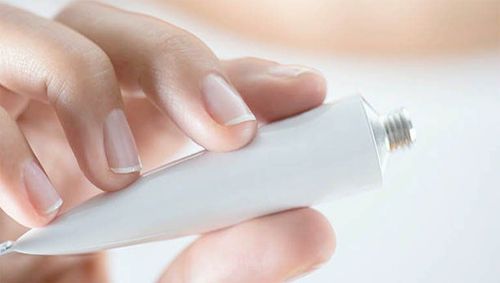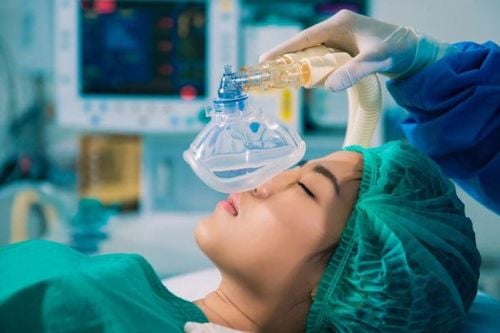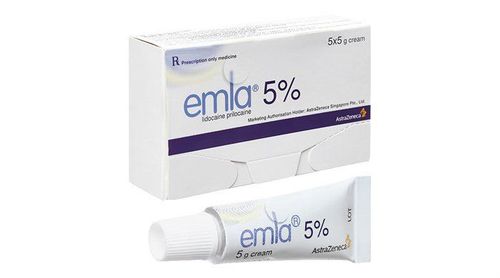This is an automatically translated article.
Agoneaze is used in the form of a topical cream that can be used on the skin and genital area to numb or lose sensation during a medical procedure. In addition, the drug can paralyze nerve endings. Using the drug Agoneaze may experience some side effects such as skin rash, itching, chest tightness.... So before using the drug, the patient needs to learn carefully and be consulted by the treating doctor.
1. Uses of the drug Agoneaze
Agoneaze includes lidocaine and prilocaine topical cream used on the skin or genital area to numb or cause loss of sensation during certain medical procedures. In addition, the use of Agoneaze is also used to prevent pain from injections or intravenous blood draw or minor surgery to remove warts. Agoneaze also contains a mixture of two local anesthetics, so it can kill nerve endings in the skin.2. Dosage and how to use Agoneaze
Agoneaze has a different dose for each patient. Depending on the severity of the disease, the doctor will prescribe the average dose and the dose may change depending on the actual condition of the patient. In addition, the dose of the drug used depends on the strength of the drug. However, the number of doses used per day and the time between doses will depend on the patient's medical problem.
For Agoneaze use topical cream in case of preventing pain due to medical procedures
Adults use from 1 -2.5 grams as a thick layer on the skin. The size of the protected area and how long the drug is retained depends on the procedure. Coverage of the application area may be made with a bandage. Agoneaze should be kept on the skin for up to 2 hours. Your doctor will then remove the bandage and wipe the medicine off your skin before the procedure. Children use the drug based on body weight and determined by the treating physician. Agoneaze used as a cream should be taken in a thick layer over the skin. The size of the protected area and the length of time the medication is kept in place will depend on the procedure performed. The area of application may be covered with a bandage. Your doctor will then remove the bandage and wipe the medicine off your skin before the procedure. Agoneaze contains two ingredients, lidocaine and prilocaine, so patients need to learn how to use it effectively. To use Agoneaze, patients should wash their hands with soap and water before and after applying the medicine. A thick layer of medication should be applied to the area to be anesthetized and should not be applied to the skin. After applying the medicine should be covered with a gauze to keep the medicine in place. Next, seal the edges of the tape to keep the medicine from leaking out for the medicine to work properly. For infants and young children, a second layer of dressing should be applied to prevent the child from touching the medication.
Before using, the patient should note that the drug used must be under the guidance of a doctor or medical staff. Agoneaze can cause unwanted side effects if used too much. Agoneaze drug should not be used for open wounds, burns or dermatitis ... unless prescribed by a doctor. When using, the patient should avoid getting the drug in the eyes, because liking the drug will cause serious eye irritation. If Agoneaze gets into the eyes, the patient should not wipe or rub their eyes, but wash them with clean water and call a doctor for help. Agoneaze can get into the ear and cause serious hearing problems. If Agoneaze gets into the ear, rinse it off with water and call a doctor.
3. Unwanted side effects when using Agoneaze
Agoneaze is effective for numbing, but it can also cause some unwanted side effects for patients. Depending on the severity and condition of the patient, there will be different types of unwanted side effects:
Common side effects of Agoneaze include fever, swelling, itching or rash at the area where the medicine is applied. white or red body when applying medicine...For cases of this condition will not need medical attention. Side effects may go away during treatment and as the body adjusts and responds to the medication. Moreover, with these side effects can be prevented, so the patient when using the drug should discuss more with the doctor to know how to do it. Rare side effects of Agoneaze include: cough, trouble swallowing, large swelling on eyelids, face, lips, tongue, severe dizziness or feeling faint, skin rash, hives, stuffy nose. ..
4. Agoneaze drug interactions
Although there are some drugs that should not be used together, in some special cases, the combination drugs will create a better treatment effect. However, to get this effect, the patient needs to discuss with the treating doctor about the medical history information. Also list medications they've used before to help your doctor choose the right combination. Agoneaze is not recommended if you have previously used medicines such as Dihydroergotamine, Dronedarone, Saquinavir, Vernakalant. In this case, the doctor may change the medication during treatment. With the following drugs will not be recommended Acetonide, Amifampridine, Amiodarone, Amprenavir, Arbutine, Atazanavir, Bretylium, Bupivacaine Liposome, Bupropion, Cobicistat, Dasabuvir, Delavirdine, Disopyramide, Dofetilide, Donepezil, Etravirine, Flecarenidase, Fosphenyronidase, Fosamp ....However, if it may be required in some cases, the doctor may change the dose or frequency of use of both drugs.
Agoneaze should not be used during the time the patient uses foods because of possible interactions with the drug. Using alcohol or drugs while using Agoneaze is also not recommended. Therefore, patients should discuss with their doctor about food choices during treatment with Agoneaze.
In addition, Agoneaze may be affected by a number of medical related problems such as:
Patients with Glucose-6-phosphate dehydrogenase (G6PD) deficiency, or a history of deficiency of this compound. have heart, lung, or breathing problems Patient has a blood disorder that is inherited or has an unknown cause and may increase the risk of a blood disorder Infection at or near the site where treatment with the drug is performed Patients with sores, broken skin, or serious trauma at the site of treatment can make your condition worse. Patients with liver disease, can make the effect of the drug increase and the ability to eliminate the drug from the body more slowly. Some notes when using Agoneaze:
Do not use the drug for children younger than 3 months of age, unless directed by a doctor. Because children can experience many unwanted side effects if too much medicine is used. When Agoneaze is given to a child under three months, a blood test should be performed to check for unwanted side effects. Agoneaze can cause serious allergic reactions including: anaphylaxis . Therefore, if you experience this condition, call your doctor immediately for prompt medical care. Agoneaze can cause rare blood problems and if you have signs such as blue lips, dizziness, fainting, ... must notify the doctor immediately. Agoneaze is used as a topical cream that can be used on the skin and genital area to numb or lose sensation during a medical procedure. In addition, the drug can paralyze nerve endings.
Follow Vinmec International General Hospital website to get more health, nutrition and beauty information to protect the health of yourself and your loved ones in your family.
Please dial HOTLINE for more information or register for an appointment HERE. Download MyVinmec app to make appointments faster and to manage your bookings easily.
Reference sources: holevn.org, drugs.com












